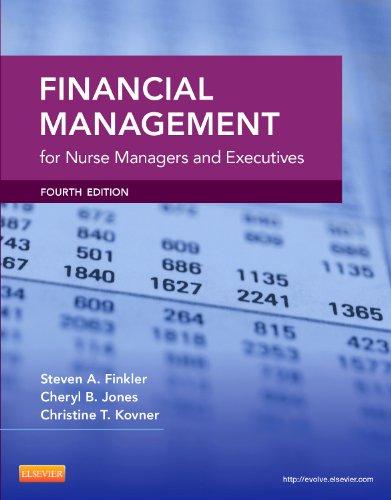You are the developer of a new manufacturing space in Cougarville, USA. This is a build-to-suit project for a creditworthy manufacturer. You have signed a 10-year lease on the following basic terms: 1. Lease is Net Net Net to the landlord meaning that tenant will pay, in addition to its base rent, all expenses and basic maintenance on the building and capital improvements for the term of the lease. The tenant will pay directly for expenses such as utilities, landscaping, maintenance, etc.; however, they will reimburse the landlord for real estate taxes and property insurance. As it is a new building, no capital improvements are expected. 2. Tenant has agreed to pay a base rent (to be determined) that will allow the Landlord to earn a return on total initial costs of 8.25% based on agreed project costs and a 5% market vacancy that includes base rent and reimbursable expenses. 3. Tenant will accept the building at completion at which time they will commence their specific upfit at their cost. They have agreed to pay 50% of base rent and 100% of reimbursable expenses in year one (2022) and 100% of base rent and reimbursable expenses thereafter. Base rent rate will be flat for the first two years and then will increase at 75% of the previous year's CPI each year thereafter. The expected CPI increase will be 3% per year. 4. As a side note, the building is a generic structure that is readily adaptable for other users now or in the future. The tenant will be responsible for constructing and funding all its specific manufacturing requirements as well as for removing them when they vacate. Building attributes are as follows: 1. 200,000 gross/rentable building square feet (GBA) 2. Site size: 15.0 acres 3. The building will occupy approximately 31% of the site. The balance of the site is occupied by parking lots, truck maneuvering areas, outside equipment areas, landscape areas, and stormwater detention areas which are included in the hard costs. Development costs are as follows: 1. Construction period: One year (2021) 2. Land cost: $75,000 per acre 3. Hard construction costs: $60.00/SF of GBA 4. Soft costs: 15% of land and hard costs. Includes all soft costs including construction period interest and construction loan fees. All hard and soft costs will be capitalized into the value of the building for cost recovery (depreciation) 5. The Developer has agreed to pay a one-time leasing commission of $675,000 which will be funded 50% at lease signing (via equity up-front) and 50% via equity during the year of construction. 2. Permanent loan: a. Close at the end of 2023. This will pay off the Construction loan assuming sufficient proceeds. b. Loan amortization: 25 years c. Monthly principal and interest payments but assumed at the end of the year. d. Loan Term: 10 years e. 3.5% interest rate per annum f. Loan costs: 0.75% of loan amount (treat as loan points for taxable income calculation). Must be paid from cash flow. g. Loan amount: 75% of appraised amount. Appraised amount is the lesser (rounded down to the nearest $1000 ) of: i. Stabilized year (2024) NOI capitalized at 7.75% ii. $80/SF of GBA h. Minimum Debt Coverage ratio is 1.25 in the first year of the permanent loan. i. There will be a 2% prepayment penalty based on any early loan payoff. This will be added to the selling expenses for tax treatment. Taxation conditions: 1. Depreciation is on all costs less land, leasing commissions, and permanent loan fee and is depreciated over 39 years since industrial building. 2. Depreciation commences in the first year of operation. Disregard mid-month convention. 3. Permanent loan costs are amortized over the term of the loan. Any unamortized costs may be used to reduce ordinary income in the year of sale. 4. Leasing commissions are amortized over the ten-year lease. Any unamortized costs may be used to reduce ordinary income in the year of sale. 5. Tax rates: a. Ordinary income taxed at 28%. b. Depreciation recapture taxed at 25% c. Long term capital gains taxed at 20% d. Assume that losses, if any, can be used to offset other passive income. h. Provide a summary of the quality of the investment using investment below: 1. Calculate before-tax IRR. What does it mean? Relate it to your required return below. 2. Run a table with before-tax NPV (real estate definition) with returns of 8% to 18% at 1% intervals. What, if any, significance is the fact at NPV may be negative? What does NPV tell you? 3. Calculate after-tax IRR. What does it mean? 4. Run a table with after-tax NPV (real estate definition) with returns of 5% to 15% at 1% intervals. What, if any, significance is the fact at NPV may be negative? What does NPV tell you? 5. Calculate the before-tax NPV at 15%. What does the result tell you about the investment? 6. If your minimum before-tax cash-on-cash return on equity is 10%, how is this investment? 7. What is the before-tax, partitioned IRR










